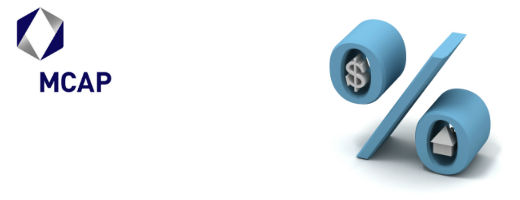Article courtesy of MCAP.
A good way for a borrower – let’s call our borrower Barry – to understand the concept of “amortization” in the context of mortgage repayment is to look forward to a time when the mortgage is fully re-paid. How much is Barry borrowing and how much can he afford to pay each month? What interest rate can Barry get on his mortgage? The answers to these questions will help determine Barry’s amortization period and will give him an idea of when he can be mortgage free.
Let’s first look at the root of the word. To “amortize” is to decrease and account for an amount of money over a period of time. Amortization is a basic element of a loan re-payment plan where the principal amount of the loan is reduced to zero at the end of a prescribed period.
In the mortgage world, we think in terms of amortization being measured in years – 25 years or 20 years or maybe 30 years. What does this mean? It means that at the end of the amortization, the principal amount of a mortgage is reduced to zero. The number of years refers to the total amount of time required to pay off the mortgage. During the amortization period, mortgage payments are set at a constant amount throughout the entire period. This method relieves a borrower from having to track the progress of their principal reduction or think about the amounts of interest and principal included in each payment. The payments remain the same and, at the end, the loan is paid in full. The amortization schedule sorts out the ratio of interest and principal for each payment.
Let’s look at an example: Barry takes out a $200,000 mortgage with an interest rate of 6% (let’s ignore the concept of compounding which we covered a couple of months ago). If this mortgage were an “interest only” mortgage, Barry would owe annual interest of $12,000, or $1,000 every month just to “rent” the $200,000. If Barry wanted to pay down the principal amount of the loan, any amount paid in excess of $1,000 per month would be allocated to the principal. Let’s say that Barry earns a bonus from his employer and decides to pay $5,000toward his mortgage the following month instead of $1,000. This means that, after the first $1,000 is allocated to interest, his principal balance would be reduced by $4,000 to $196,000. If Barry resumed paying only interest the following month, the 6% interest rate would be calculated on the new principal balance of $196,000, making Barry’s monthly interest payment $980. But if Barry then decides to maintain his monthly payment of $1,000, he would pay his interest of $980 and the remaining $20 would further reduce his principalbalance. If Barry continues to pay $1,000 every month, he will have essentially created his own amortization schedule – although it’s a slow one – by maintaining a constant payment amount which results in him paying an ever increasing amount toward principal every month.
Most fixed rate mortgages do not allow the kind of payment flexibility which Barry enjoys in the example above. Rather, an amortization schedule, based on the interest rate and the amortization period (such as 25 years) is created when the loan is first made. What happens when a mortgage is made for an initial 5 year term, with an amortization of 25 years, is renewed? If the interest rate is different for the renewed term, then the payment schedule must change in order to maintain the original amortization of 25 years. What if the new rate is lower and the borrower wants to maintain the payment amount from the initial term? In this scenario, the lower interest rate means that less interest is owing on each payment so if the payment doesn’t change, the additional amount is allocated to principal. This reduces the principal balance more quickly and that means a shorter amortization period. The borrower who maintains the same payments with a lower interest rate will pay off their mortgage faster. If rates are higher at renewal and a borrower cannot afford the higher payment amount, they could choose a lower payment amount which would then lengthen their amortization (if their lender allows them to do so).
[box type=”info” border=”full”]A longer amortization period means lower payments over a longer time and vice versa.[/box]
When “extended” amortizations became available in Canada over the last few years, they made housing more affordable – on a cash flow basis – for many borrowers because of the lower payments. Borrowers who choose extended amortizations pay more interest in the long run because they are taking a longer time to fully re-pay the principal. Mortgage professionals often advise borrowers to consider the option of choosing an extended amortization in order to initially qualify for a larger mortgage and, when their incomes rise in the future, to increase their payments, reduce their amortization period and re-pay their mortgage faster.
